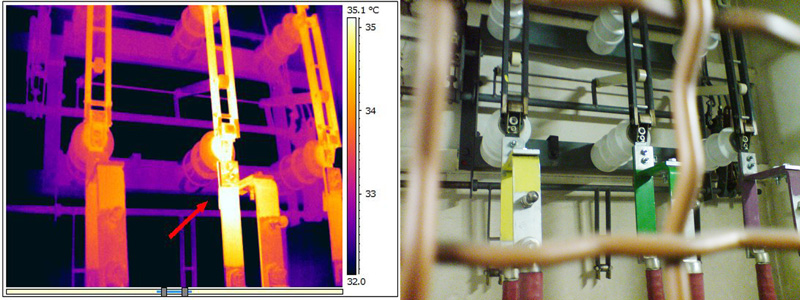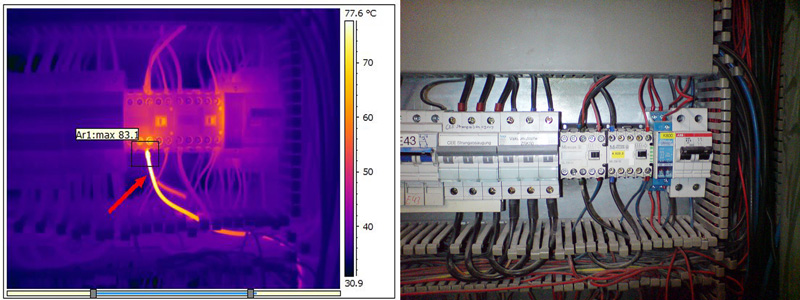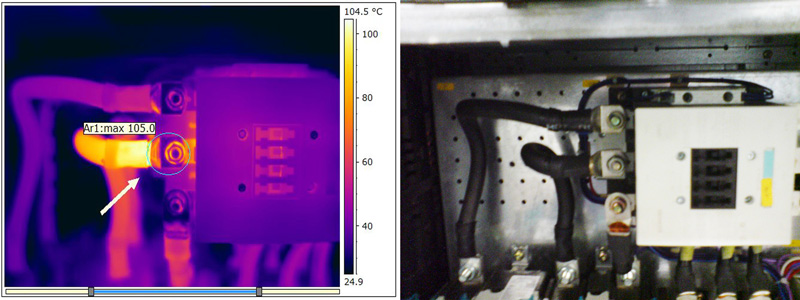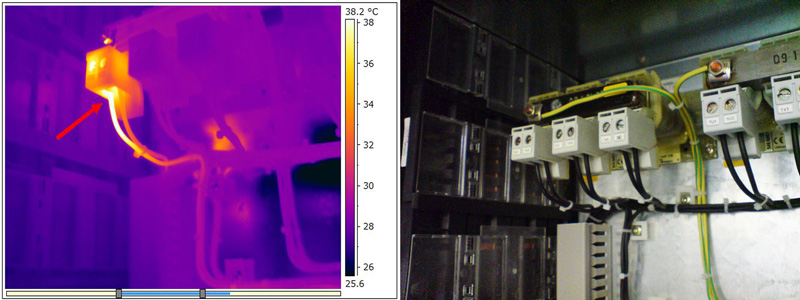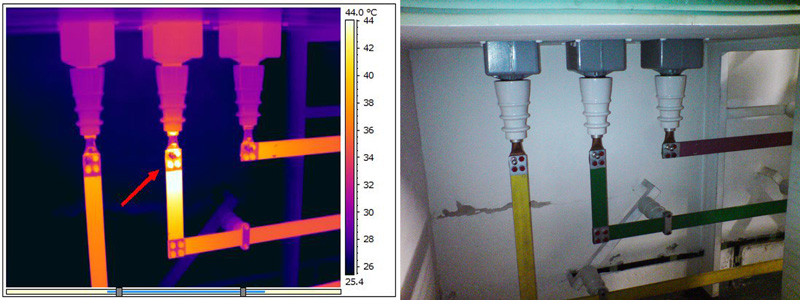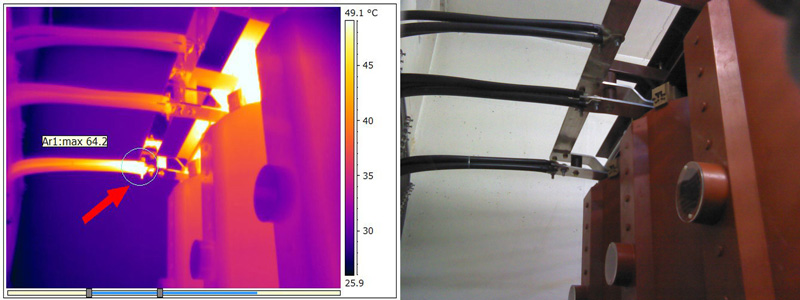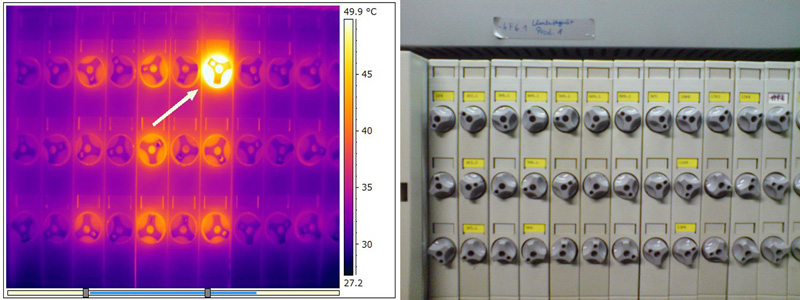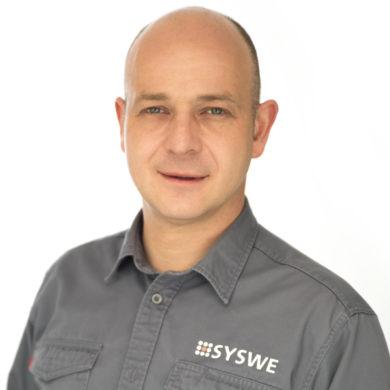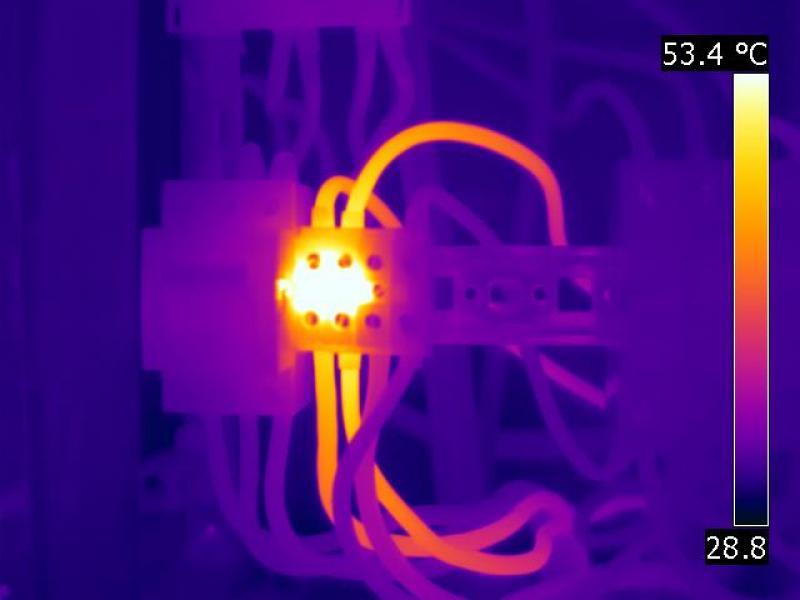
SYSWE – Your partner for VdS-electro thermography
- We perform the VdS-electro thermography for you, with our high-performance thermographic camera P620 from FLIR.
- SYSWE is certified after DIN VDE 0105 for the implementation of the statutory, annual inspection of stationary and nonstationary equipment
- Subsequent to the inspection you get an inspection report after VdS 2860
VdS-electro thermography
SYSWE inspects your electrical systems for defects in the connection, local overheatings and age-related abrasion. The thermography enables a contactless, visual measurement of surface temperatures at electrical systems. For this reason it is possible to locate thermal weak spots during operation, under real conditions and from a safe distance with only one picture.
The electro thermography experts from SYSWE do the electrothermal inspections at all voltage levels, e.g. for
- distribution cabinets
- cubicles and control cabinets
- electric machines and power units
- cable and rail systems, overhead lines
- low voltage, high voltage and maximum voltage switching stations
- transformer
- photovoltaics systems
- compensation systems
- computer centers
- electrical equipment of mobile facilities
- electrical components
The advantages for you:
A thermographic check of your electrical system has many advantages for the plant operator:
- Increased safety for persons and environment
Enhancement of technical reliability of the system
- Fast and easy inspection of the system while continous operation
- Verification of the inspection obligation in case of damage for the insurance
Ask for our quotation for the annual periodic inspection!
Anomalies at electro thermography
Inspection report for electro thermography
After a thermographic inspection of your electrical system, you will get an inspection report. The structure and the minimum content of this report are defined after VdS 2860.
Content of the inspection report after VdS 2860:
- Cover page
- List of inspected operation area with comments
- Appendix (one site for each abnormality)
The cover page of the inspection report contains all fundamental information to the thermographic inspection, like the details of the inspected object, data of the electro thermograph, the inspected area in the company and the used measuring devices, as well as the result of the inspection. Important is also the signature respectively the stamp of the thermograph.
The list of inspected equipment contains a listing of the inspected equipment with a consecutive number, the results of the inspection (without thermal abnormality, thermal abnormality, dangerous thermal abnormality) as well as comments and the plant description.
For thermal abnormalities an appendix is attached for each abnormality. The abnormality is illustrated and explained. There are information about the system and its operating status while the inspection, the type of component and the component name, the measured temperatures, the temperature difference and a proposed solution. The defect is also assigned to a defect classification.
The defect classification is classified after the severity of the defect:
- Class 0: 0K Δθ 10K – no actions necessary
- Class 1: 10K Δθ 35K – plan repair long-term
- Class 2: 35K Δθ 70K – elimination of the weak spot within 6 months
- Class 3: Δθ 70K – immediate elimination of the weak spot
FAQ
How does thermography work?
The thermographic camera reacts sensitive to longwave, infrared radiation, normal cameras conversely only to the visible light. The infrared rays are emitted from all objects, the detector cell of the camera absorbs this radiation and warms up. The detector cell is simultaneously live, the heating results in a voltage change. This potential drop is displayed as measurement signal and counted back to a picture. As result we get the thermogram and can appreciate the different temperatures of the objects.
Why perform thermography at electrical systems?
Thermography at electrical systems may help to find possible defects or present weak points, that would not be noticed at a simple visual inspection. Not every weak point is getting visible by corrosion at the component. The thermography indicates also the initiating defects, because these are generated by overheating of the component, e.g by a loose screw fitting. Weak points can be uncovered before the destruction of the component.
Am I obligated to inspect my electrical systems?
The property insurer can prescribe thermography of electrical systems and demand an annual thermographic inspection from the operator. The electro thermography has to be perfomed by an expert for electro thermography after DIN VDE 0105 approved by the VdS.
What are the advantages of electro thermography?
- Reduction of fire hazard and risk of accident, possible weak spots can be identified early
- Increase of the plant availability, possible defects that result in a plant downtime can be identified early
- Electro thermography is performed while ongoing operation, there is no plant downtime necessary
- Electro thermography can be performed supportively to the visual inspection




